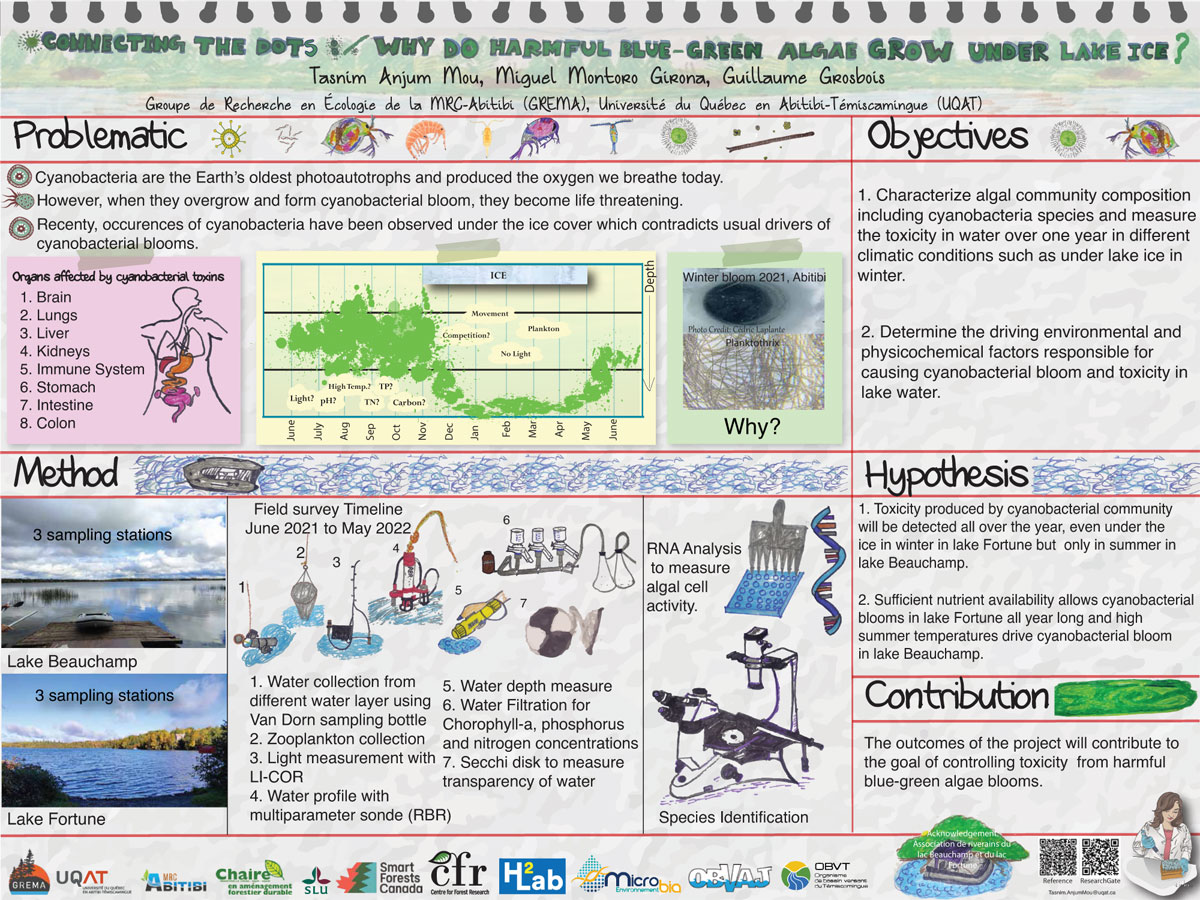
Cyanobacteria are the Earth’s oldest photoautotrophs and provided the level of oxygen we currently have today. However, when they overgrow and form a bloom, they cause ecological degradation and sometimes they produce toxins that become life threatening. This phenomenon, called “harmful algal blooms”, is linked with eutrophication, and water temperature rising in boreal lakes. Recent observations showed some unusual occurrence of harmful algal blooms under the ice cover which contradicts the fact that higher temperature always influence the bloom formation. This study aims to better understand the dynamic of harmful algal blooms in boreal lakes by identifying the specific driving factors responsible for cyanobacterial development based on seasonal variation from lakes of Abitibi-Témiscamingue. We hypothesize that, cyanobacterial bloom formation and development are due to high water temperature during summer and to high nutrient availability during winter and that different species of cyanobacteria occur during different seasons. Our experimental design is composed by two different types of boreal lakes: Lake Fortune which has unusual under-ice cyanobacterial growth and Lake Beauchamp which is supposed to be low in nutrients as it is mainly fed by groundwater. We will identify phytoplankton community composition and the share of cyanobacterial species in those communities in each month starting from June 2021 to May 2022 to follow their seasonal variability. Also, cyanotoxin concentrations will be estimated to identify which species of cyanobacteria produce cyanotoxins as well as to determine the most harmful moment of the year for aquatic life and people. Finally, RNA analyses will be carried out to determine the cyanobacterial cell activity. The outcomes of the project can contribute to the goal of eradication life threatening toxicity and develop comprehensive knowledge and tool for improving water quality for the Abitibi-Temiscamingue region.
